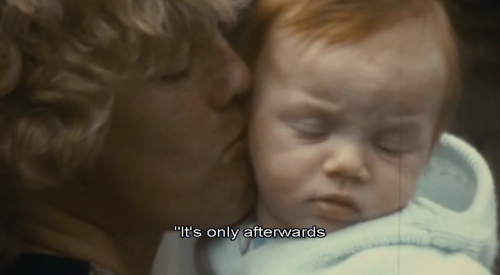DOCUMENTARY/STORIES WE TELL
Bill Nichols 6 Documentary modes
Expository Conventions
• Voiceover, addresses the audience directly.
• The voiceover may either be a ‘voice of God’ commentator (heard but not seen); or ‘voice of authority’ (seen and heard – usually an expert in the relevant field).
• Images are used to illustrate (or sometimes counterpoint) the voiceover.
• Editing is used for continuity, to link together images that support the argument put forward in the voiceover.
• A variety of footage, interviews, stills, archive material is assembled to support the argument.
• Attempts to persuade the audience of a particular point of view, often by appealing to logic and the idea of a common-sense response.
Observational Conventions
• Location shooting – using hand-held cameras.
• Long takes dominate.
• Synchronous (direct) sound recording.
• No voiceover (in its purest form).
• No interviews
. • Documentary-maker’s presence is hidden.
• Subjects pretend that they are not being filmed.
Reflexive Conventions
• Borrows techniques from fiction film for an emotional, subjective response.
• Emphasises the expressive nature of film; anti-realist techniques e.g. re-enactments, expressive lighting, dramatic music.
• Voiceover (when present) is likely to be questioning and uncertain – rather than authoritative.
• Reliance on suggestion and implied meaning rather than fact.
Performative Conventions
• Documentary-maker (and crew) interact with the subject.
• The documentary is often shaped into the narrative of an investigation or search, possibly without a satisfactory conclusion.
• The audience is addressed in an emotional and direct way.
• Subject matter often concerns identity (gender, sexuality) – rather than ‘factual’ topics.
Participatory or Interactive Conventions
• Documentary-maker (and crew) interacts with the subject.
• Interviews dominate but tend to be informal – literally ‘on the run’ questioning.
• Use of archive material – stills, news footage, newspaper headlines, letters etc
. • Location shooting; hand-held camera. Participatory or Interactive Conventions...
• Long takes dominate.
• Documentary-maker is visible to the audience – intervenes and participates in the action.
Poetic Conventions
• Documentary-maker gives subjective view
• Not in typical narrative structure
• Particular mood/tone is created – enhanced by music
• Some light rhetoric but not always
• Events are under-developed, and situations can be left unsolved
• Perceived as Avant-garde (innovative, experimental, pushes boundaries)
DOCUMENTARY OF YOUR CHOICE :
STEVE JOBS: THE MAN IN A MACHINE
What is Documentary?
Documentaries bring views into new words and experience’s through the presentation of factual information about real people, places, and events, generally (but not always) portrayed through the use of actual images and artefacts. But factuality alone dose nit define documentary films; it’s what the filmmaker dose with those factual elements, weaving them into an overall narrative that strives to be as compelling as it is truthful and is often greater than the sum of its parts.
Explore the concept of documentary-use examples
The term ‘documentary’ was invented in the 1920’s by Canadian/British documentary filmmaker, John Grierson who famously defined it as ‘creative treatment of actuality’. A Documentary is a recording of an event, generally based on people’s perspective’s and genuine facts. Many theorist and filmmakers have defined it various ways of explaining them .For example Bill Nicol’s he has separated them in 6 modes, Mark Ramey differing them in “styles “and Kim Longinotto making them an “experience of watching a friction film as possible, though, of course, nothing is ever set up”.
However, in the end documentaries are a mixture of all those theories and are made to represent the closest thing to the truth or more accurately a version of it. In order to so that they use the following codes and conventions: voiceover, narrativization, follow real events, archive footage, interviews-taking heads, technicalities of realism and graphics.
For example, the Documentary “Stories we tell” we do see interviews and archive footage, yet there are some recreated scenes that do follow real events and the navigation of the story. Most of the elements are used to make the audience connect the dots and understand how the story unfolds. Though, editing is what brings it and all documentaries to life because they are mediated in a way to generate a particular story, viewpoint, message or experience. ‘Stories we tell’(Sarah Polley,2013) his documentary is very diverse and include different modes and styles of the theorist.




Comments
Post a Comment